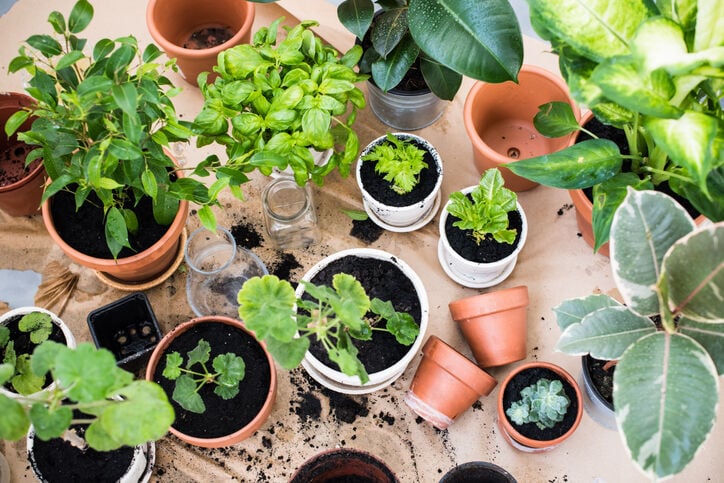With all of the heat this time of year, you are probably thinking that it might be a good time to start some indoor plants. Indoor gardens are also a great option for people in apartments or other small spaces.
If you already have houseplants, you may have noticed that our climate brings some unexpected challenges even to indoor gardens. Here are some tips to think about if you want to have more plants in your indoor space.
Humidity is an issue for houseplants in the desert. Most houseplants are understory tropical plants, so they are used to a shady, moist environment. When you look at potential plants to bring home, take a note of their leaves. Waxy or fuzzy leaves tend to be less sensitive to the dryness of our indoor air.
Plants with small soft leaves (like maidenhair ferns, Adiantum spp.) will probably dry out and die unless you are constantly spraying them with misted water. If you really want to grow plants like this, try growing them in your bathroom (assuming you have some light there) which will provide them with some extra moisture.
If you have a humidifier that you run in the winter or an evaporative cooler, you can also place some of your plants near it; they will be happy with the extra moisture. On the plus side, the more plants you have, the more they will filter and humidify your indoor air, so try to group sensitive plants together so they can create a moist mini-ecosystem. Whatever you do, keep the little guys away from the heating vents!
If you have pets, watch out for toxic plants. Unfortunately, many typical houseplants are toxic and even deadly to pets. But even if you have a cat that eats every houseplant, you have lots of options for your indoor garden. The ASPCA has useful printable lists of non-toxic houseplants that are organized by pet species. You can also use their website to identify which of your plants might be poisonous.
Choose wisely when it comes to light exposure. Unlike many northern climates, our houses can still have too much indoor light for many houseplants. If you’re trying to grow plants in a very sunny room with lots of windows (like an Arizona room), you will probably want to pick Mediterranean plants and succulents over tropical understory plants.
If you have the space for a bigger pot, you can grow some dwarf citrus or olive trees. On the other side of the coin, if all you have are north-facing windows, you will be limited to the shade-loving plants unless you get a grow light. The great thing about houseplants is you can move them easily, so don’t be afraid to experiment with location.
Don’t forget your vertical space. Growing plants vertically is a challenge in our dry, hot outdoor spaces, but inside it’s a different story. There are some beautiful examples on the internet of people who have hung plant pots from the ceiling and created a lush, green oasis inside a room. You can also create your own vertical growing walls.
Watch out for your floors. Most people know not to have houseplants on wood floors, but even tile floors will get mineral and water stains if you keep your plants directly on them. Saltillo tile in particular can develop efflorescence (a white haze) when exposed to water. Use larger trays under your plant saucers so that when you (inevitably) over-water the spillover doesn’t damage anything.
Mind your soil. Just like in an outdoor garden, the soil is key to a successful indoor garden. In our dry climate, you will want to pick larger containers so that your plants have a larger reservoir of water. Make sure you choose peat-free potting soil or make your own blend to match your plant’s needs. You will need to fertilize your plants periodically since they will use up the nutrients in the pot. Organic fertilizers such as blood meal and kelp have less overall nutrients than synthetic fertilizers, but are much easier to apply without damaging your plants (and better for the environment). They do smell, however, so consider that before buying a giant bag or bottle of fish meal!
Don’t worry about those little flies. They’re called fungus gnats, although they are actually tiny flies. They don’t bite or harm your plants. To minimize them, don’t keep your plants too moist, since their larvae need moist soil to develop. Check your soil before you water, and allow it to dry a bit on top before re-watering.
For inspiration on creating your indoor oasis, check out these links.





